Armin Djamei
@effectomics.bsky.social
Reposted by Armin Djamei
#2027ISMPMI - Try 2 for Jeju, Korea!
Hope to see you there and I’m glad that South Korea gets to host after their turn was missed because of the pandemic.
There is a promise of good food 🤤
Though I may need to start saving up now with the state of things…
#2025ISMPMI
Hope to see you there and I’m glad that South Korea gets to host after their turn was missed because of the pandemic.
There is a promise of good food 🤤
Though I may need to start saving up now with the state of things…
#2025ISMPMI

July 17, 2025 at 5:48 PM
#2027ISMPMI - Try 2 for Jeju, Korea!
Hope to see you there and I’m glad that South Korea gets to host after their turn was missed because of the pandemic.
There is a promise of good food 🤤
Though I may need to start saving up now with the state of things…
#2025ISMPMI
Hope to see you there and I’m glad that South Korea gets to host after their turn was missed because of the pandemic.
There is a promise of good food 🤤
Though I may need to start saving up now with the state of things…
#2025ISMPMI
Reposted by Armin Djamei
Mary wildermuth #2025ISMPMI gives the best introduction to the Powdery mildew fungus :)
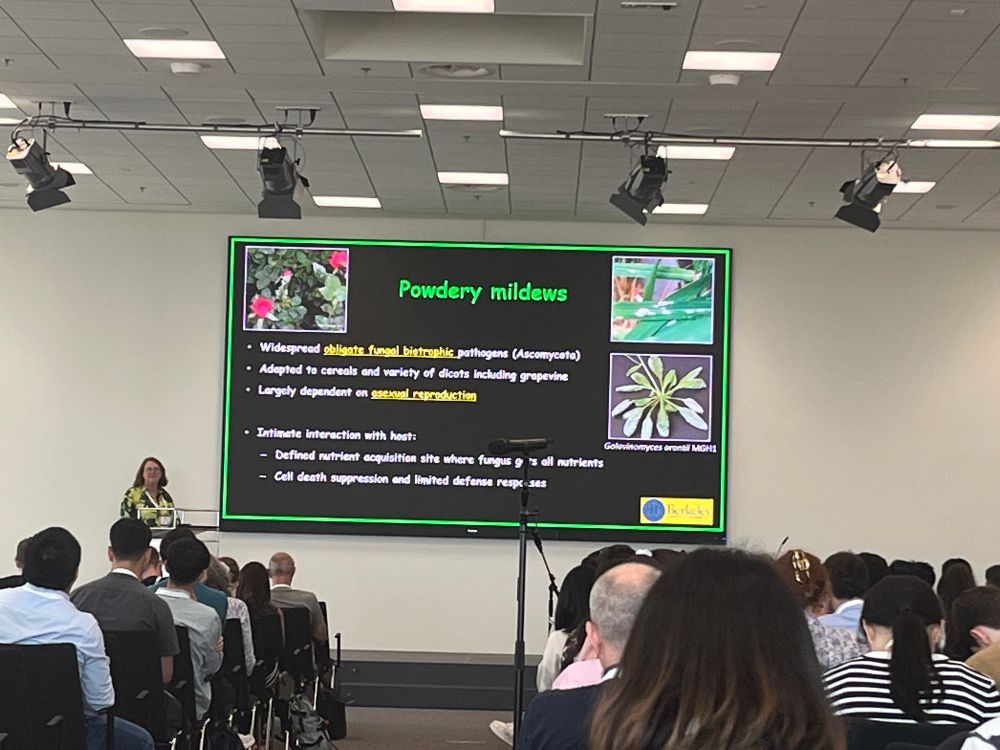
July 17, 2025 at 1:52 PM
Mary wildermuth #2025ISMPMI gives the best introduction to the Powdery mildew fungus :)
#2025ISMPMI Songyuan Zhang from the Zipfel lab is learning from nature how to engineer new MAMP receptors. Great results.
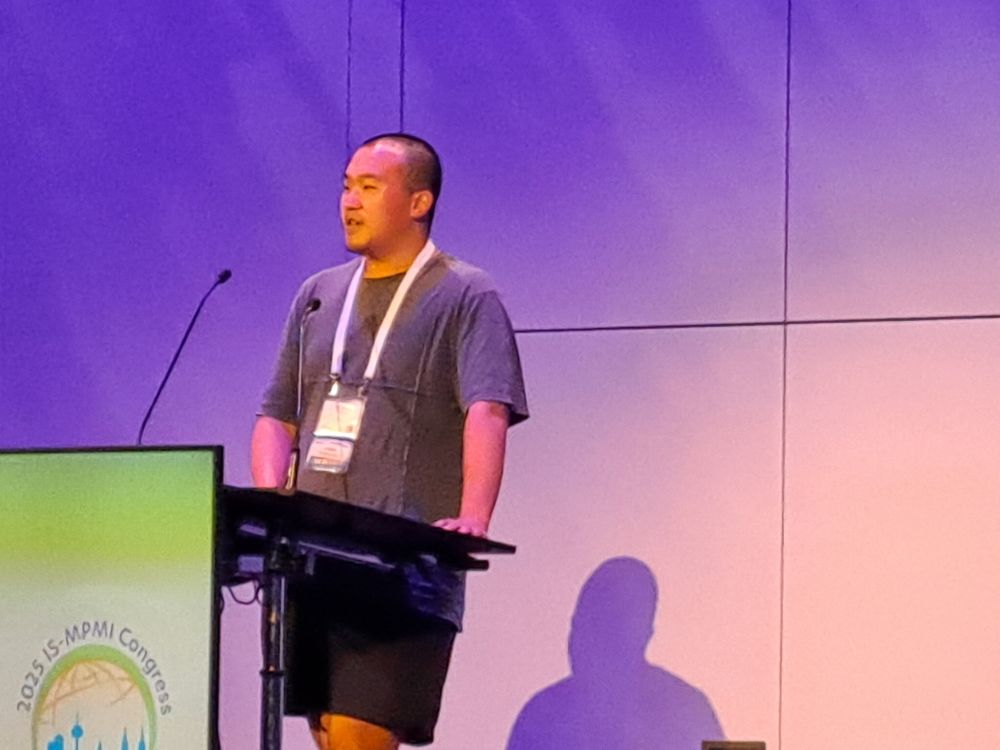
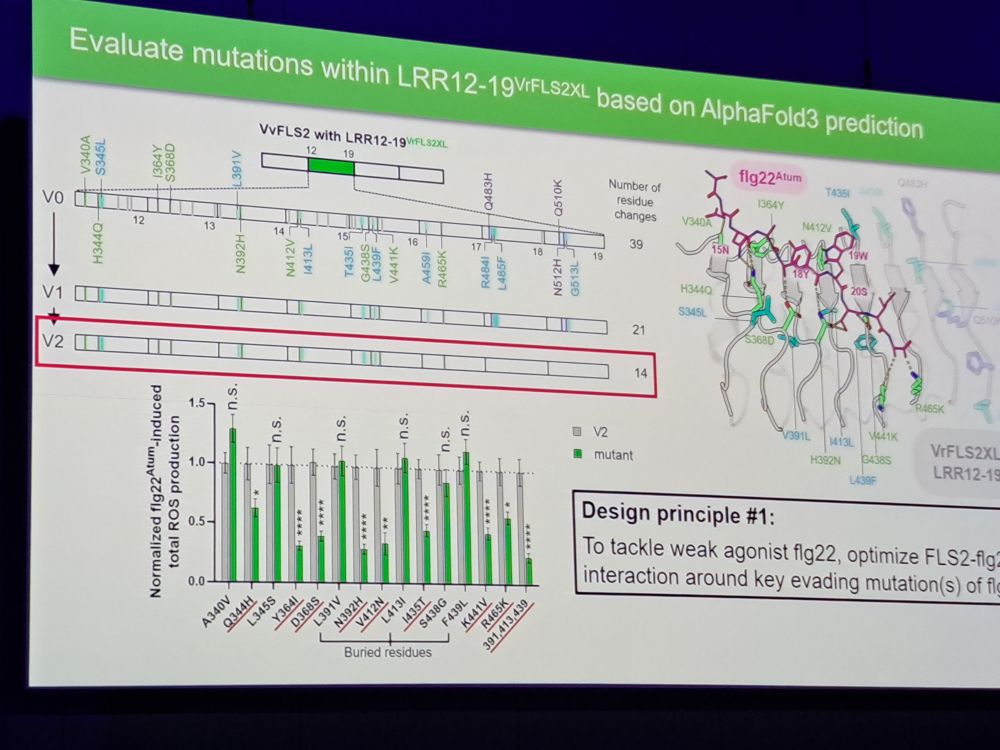


July 17, 2025 at 10:08 AM
#2025ISMPMI Songyuan Zhang from the Zipfel lab is learning from nature how to engineer new MAMP receptors. Great results.
#2025ISMPMI Benjamin Menn presents an elegant yeast surface displace screen to identify new carbohydrate binding receptors of plants.
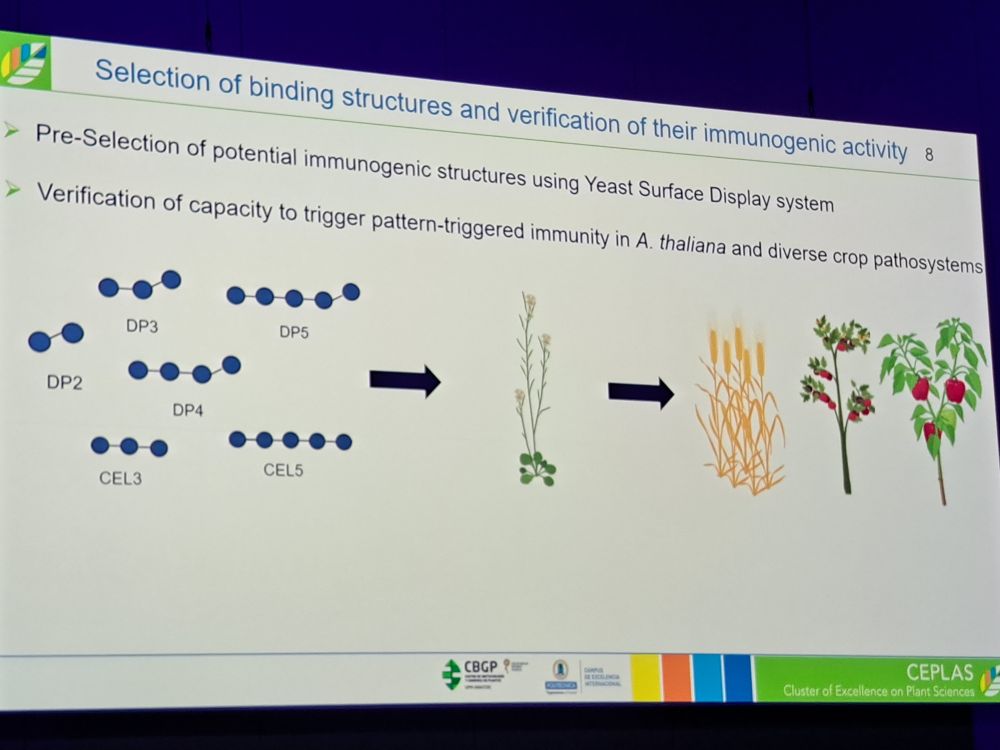
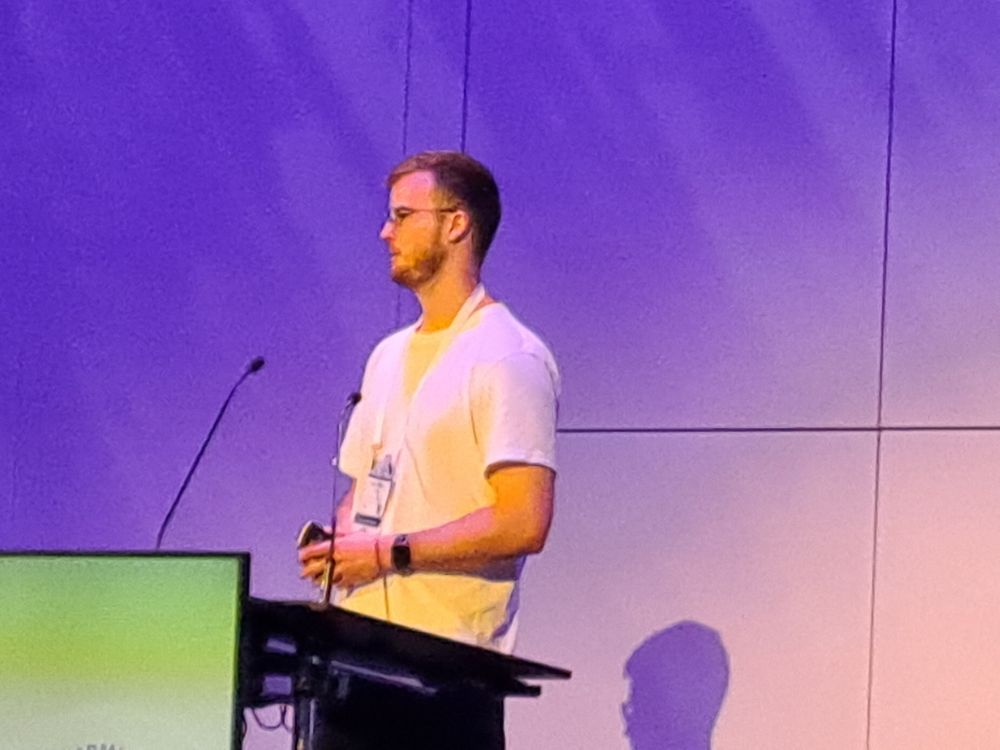
July 17, 2025 at 9:56 AM
#2025ISMPMI Benjamin Menn presents an elegant yeast surface displace screen to identify new carbohydrate binding receptors of plants.
#2025ISMPMI Thi Bich Luu wants to make a difference by transferring Nod factor susceptibility to barley, maize and other cereals. Taking candidate homolgs of NFR5 receptor and by domaine swapping chimaric receptors are build.
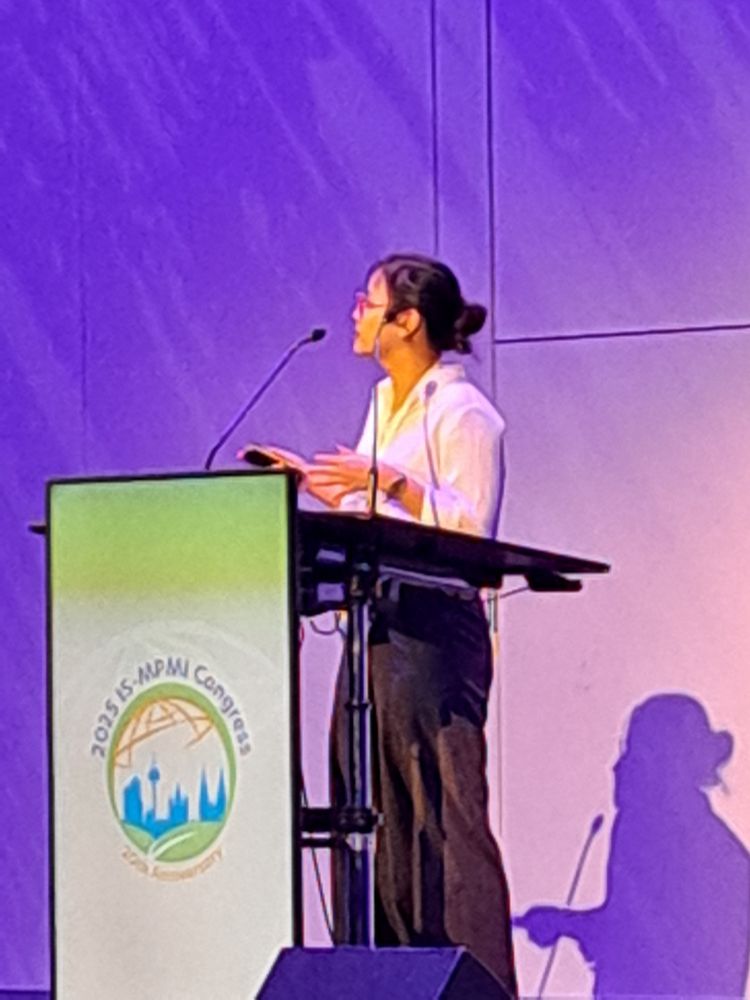
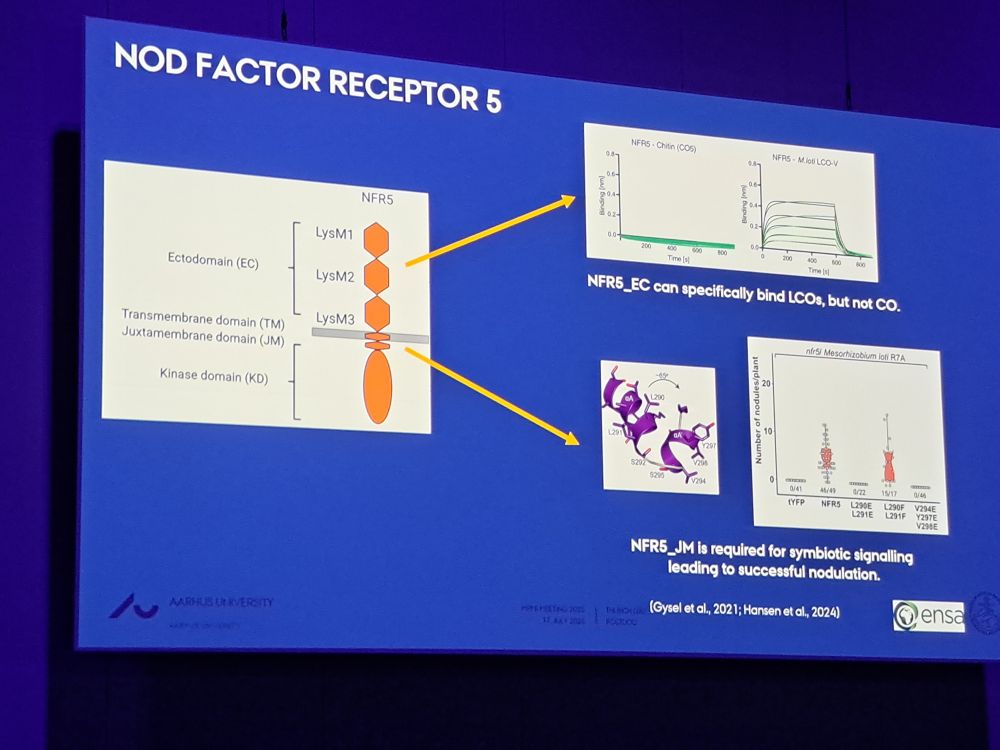
July 17, 2025 at 9:45 AM
#2025ISMPMI Thi Bich Luu wants to make a difference by transferring Nod factor susceptibility to barley, maize and other cereals. Taking candidate homolgs of NFR5 receptor and by domaine swapping chimaric receptors are build.
#2025ISMPMI Rhizobia and Haber-Bosch good bye? Luis Rubio goes for the challenge on reconstituting nitrogen fixation directly in plants by targeting around 20 needed components in Mitochondria in a step-wise process.
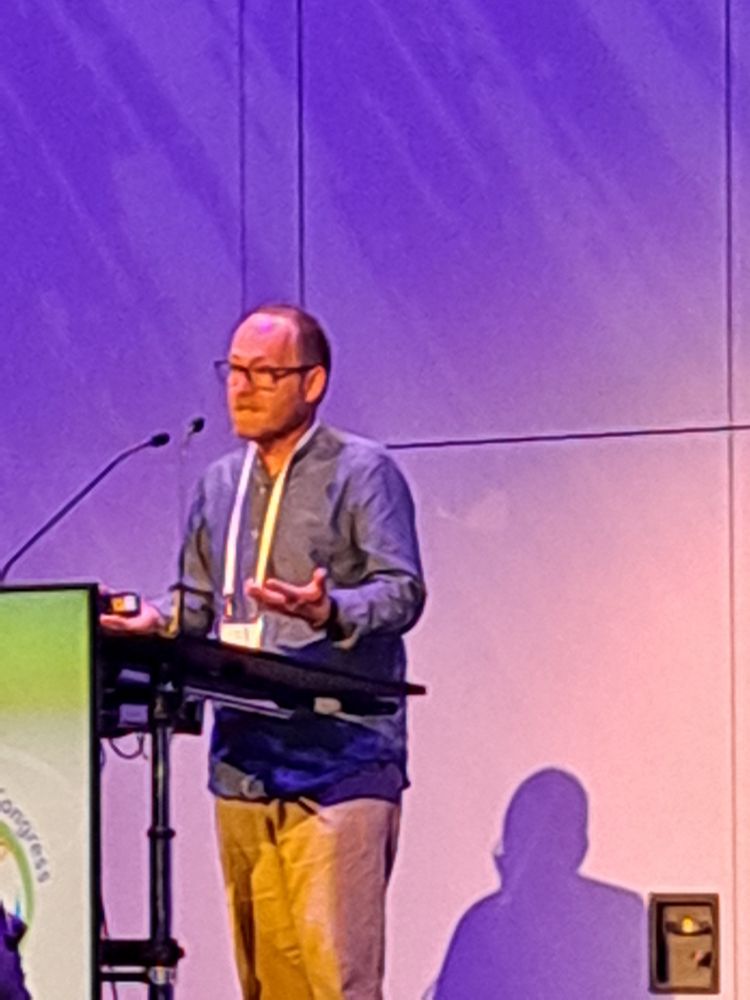
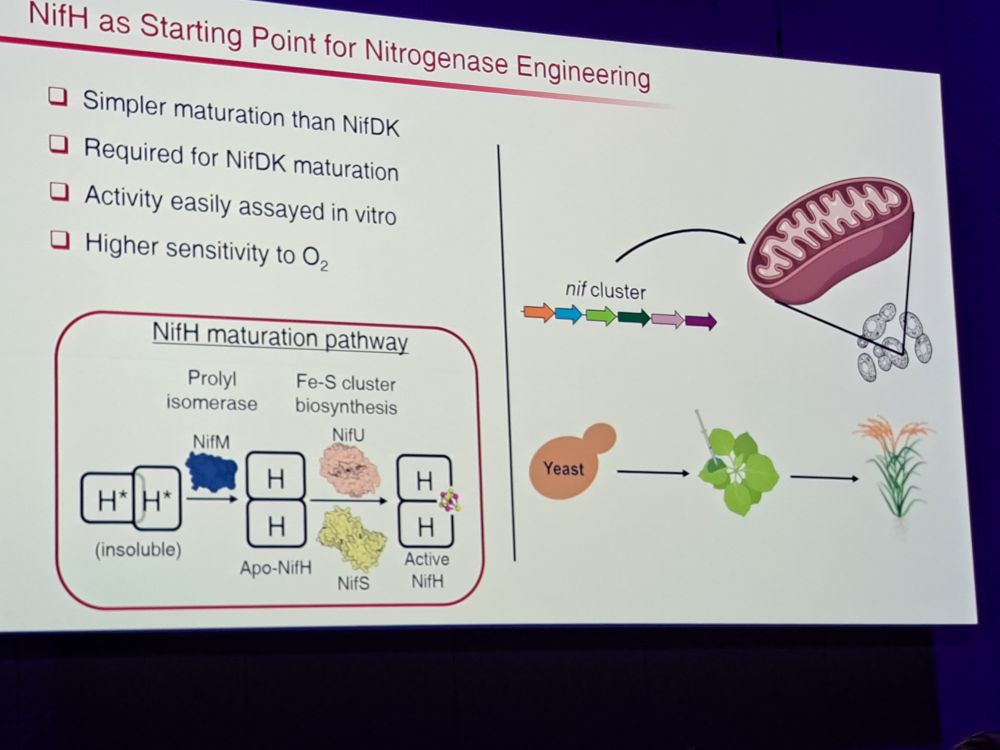
July 17, 2025 at 9:32 AM
#2025ISMPMI Rhizobia and Haber-Bosch good bye? Luis Rubio goes for the challenge on reconstituting nitrogen fixation directly in plants by targeting around 20 needed components in Mitochondria in a step-wise process.
Reposted by Armin Djamei
@kenichitsuda.bsky.social is introducing the Concurrent sessions on biotic/abiotic trade-offs in plant-microbe interactions #2025ISMPMI

July 17, 2025 at 8:32 AM
@kenichitsuda.bsky.social is introducing the Concurrent sessions on biotic/abiotic trade-offs in plant-microbe interactions #2025ISMPMI
Reposted by Armin Djamei
www.biorxiv.org/content/10.1...
Up next at #2025ISMPMI @kseniakrasileva.bsky.social discussing work on protein language model for receptor engineering.
Up next at #2025ISMPMI @kseniakrasileva.bsky.social discussing work on protein language model for receptor engineering.
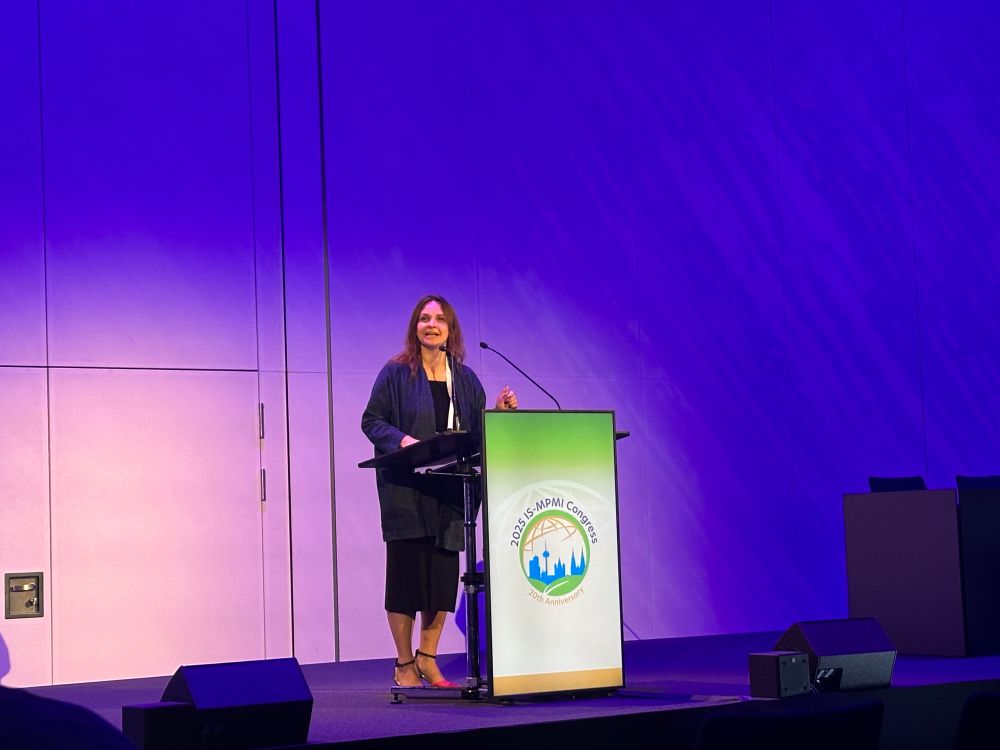

July 17, 2025 at 8:34 AM
www.biorxiv.org/content/10.1...
Up next at #2025ISMPMI @kseniakrasileva.bsky.social discussing work on protein language model for receptor engineering.
Up next at #2025ISMPMI @kseniakrasileva.bsky.social discussing work on protein language model for receptor engineering.
Reposted by Armin Djamei
@kseniakrasileva.bsky.social is the first talk at the engineering traits session at #2025ISMPMI
Branching into PRRs thanks to @danimstevens.bsky.social.
The ?: Can we use language models to predict host and microbe proteins interaction outcomes?
The answer: Yes! New “mamp-ml”does pretty well.
Branching into PRRs thanks to @danimstevens.bsky.social.
The ?: Can we use language models to predict host and microbe proteins interaction outcomes?
The answer: Yes! New “mamp-ml”does pretty well.
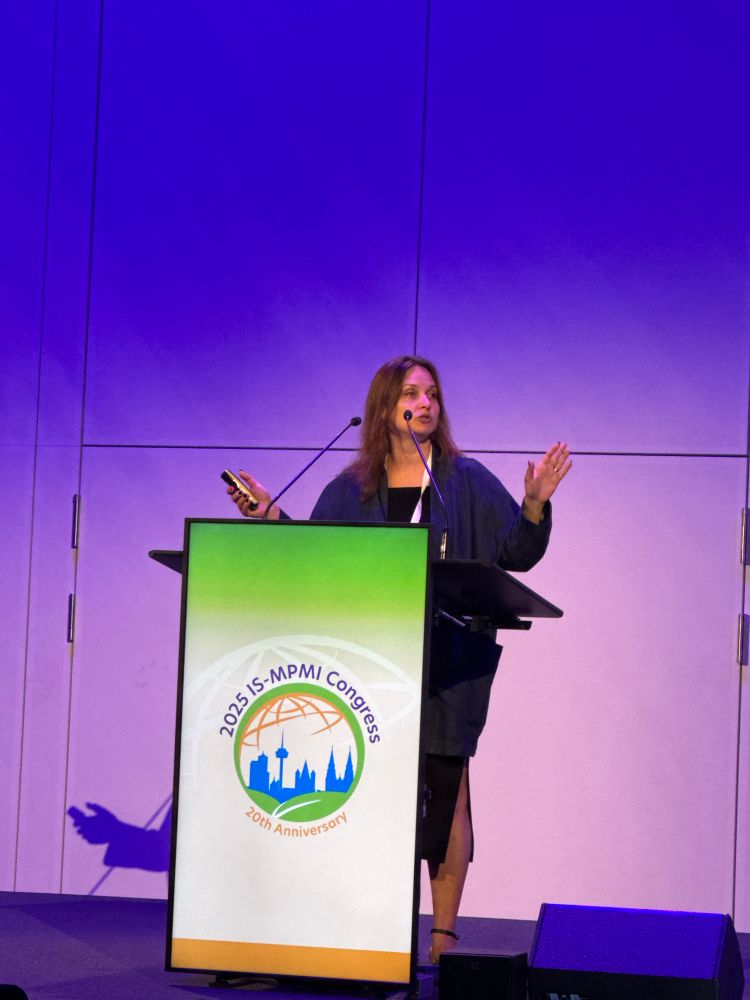
July 17, 2025 at 8:41 AM
@kseniakrasileva.bsky.social is the first talk at the engineering traits session at #2025ISMPMI
Branching into PRRs thanks to @danimstevens.bsky.social.
The ?: Can we use language models to predict host and microbe proteins interaction outcomes?
The answer: Yes! New “mamp-ml”does pretty well.
Branching into PRRs thanks to @danimstevens.bsky.social.
The ?: Can we use language models to predict host and microbe proteins interaction outcomes?
The answer: Yes! New “mamp-ml”does pretty well.
Reposted by Armin Djamei
#2025ISMPMI - first new to nature chimeric NLR sensors being created, with integrated domains that do not have sequence or structure matches in the recorded life - raises questions on assessing biosafety & food safety aspects for these immune receptors for lab and field studies.
July 17, 2025 at 9:15 AM
#2025ISMPMI - first new to nature chimeric NLR sensors being created, with integrated domains that do not have sequence or structure matches in the recorded life - raises questions on assessing biosafety & food safety aspects for these immune receptors for lab and field studies.
Reposted by Armin Djamei
@angusb.bsky.social wants to engineer plant resistance proteins (NLRs) from scratch.
Can we create protein domains to integrate into NLRs to catch pathogen effectors? New tech makes this possible now.
Chose Magnaporthe and Fusarium effectors as targets - many steps later, it worked!
#2025ISMPMI
Can we create protein domains to integrate into NLRs to catch pathogen effectors? New tech makes this possible now.
Chose Magnaporthe and Fusarium effectors as targets - many steps later, it worked!
#2025ISMPMI
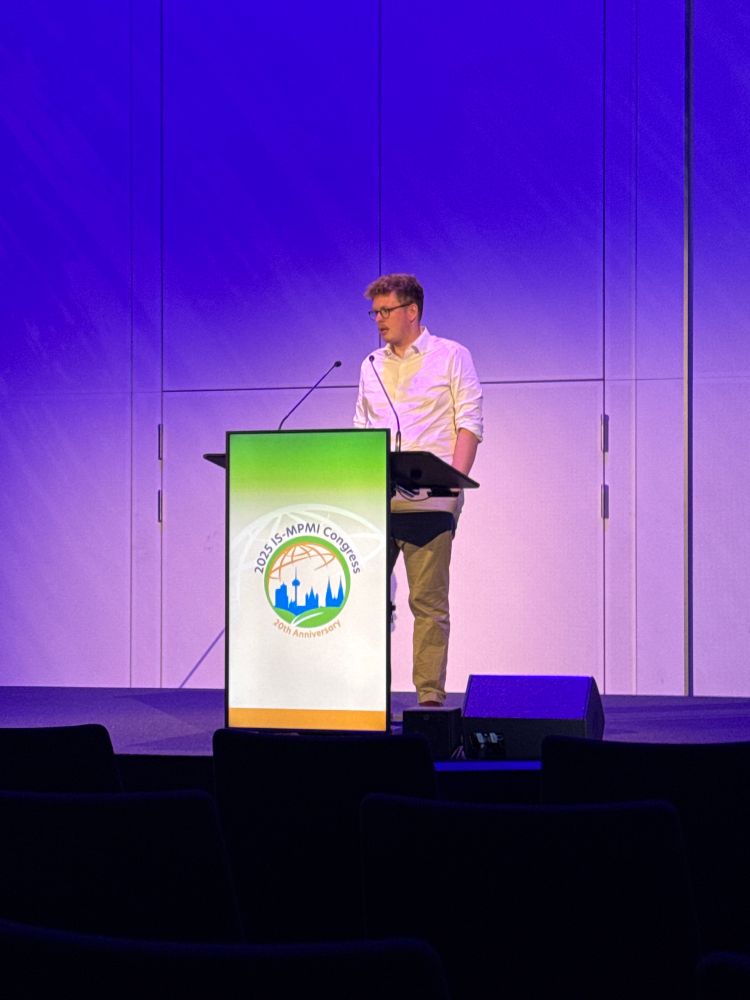
July 17, 2025 at 9:04 AM
@angusb.bsky.social wants to engineer plant resistance proteins (NLRs) from scratch.
Can we create protein domains to integrate into NLRs to catch pathogen effectors? New tech makes this possible now.
Chose Magnaporthe and Fusarium effectors as targets - many steps later, it worked!
#2025ISMPMI
Can we create protein domains to integrate into NLRs to catch pathogen effectors? New tech makes this possible now.
Chose Magnaporthe and Fusarium effectors as targets - many steps later, it worked!
#2025ISMPMI
Reposted by Armin Djamei
Dani’s recent paper appears to be the top #2025ISMPMI post which is impressive for someone not here 💓
bsky.app/profile/dani...
bsky.app/profile/dani...
#2025ISMPMI 📣 In silico screening of PRR-epitope interactions is now possible!
Here, we developed mamp-ml to predict their immunogenic outcomes without structural context. Let's accelerate engineering plant receptors for robust resistance! 🚀🌱 Small 🧵
www.biorxiv.org/content/10.1...
Here, we developed mamp-ml to predict their immunogenic outcomes without structural context. Let's accelerate engineering plant receptors for robust resistance! 🚀🌱 Small 🧵
www.biorxiv.org/content/10.1...

mamp-ml: A deep learning approach to epitope immunogenicity in plants
Eukaryotes detect biomolecules through surface-localized receptors, key signaling components. A subset of receptors survey for pathogens, induce immunity, and restrict pathogen growth. Comparative gen...
www.biorxiv.org
July 17, 2025 at 8:41 AM
Dani’s recent paper appears to be the top #2025ISMPMI post which is impressive for someone not here 💓
bsky.app/profile/dani...
bsky.app/profile/dani...
Reposted by Armin Djamei
In the trait engineer session and Aurelia Rakotondrafara makes a quip that her talk has no AI 😅
Under-revision-study from her lab uses a treatment of a mycovirus protein to reduce growth and increase fungicide susceptibility of the pathogen Sclerotinia sclerotiorum.
#2025ISMPMI
Under-revision-study from her lab uses a treatment of a mycovirus protein to reduce growth and increase fungicide susceptibility of the pathogen Sclerotinia sclerotiorum.
#2025ISMPMI
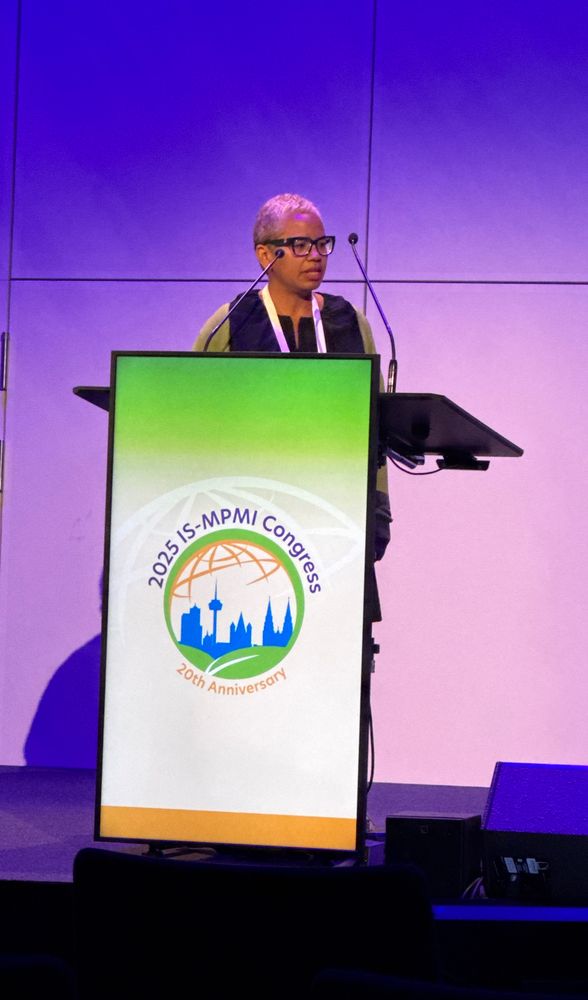
July 17, 2025 at 9:18 AM
In the trait engineer session and Aurelia Rakotondrafara makes a quip that her talk has no AI 😅
Under-revision-study from her lab uses a treatment of a mycovirus protein to reduce growth and increase fungicide susceptibility of the pathogen Sclerotinia sclerotiorum.
#2025ISMPMI
Under-revision-study from her lab uses a treatment of a mycovirus protein to reduce growth and increase fungicide susceptibility of the pathogen Sclerotinia sclerotiorum.
#2025ISMPMI
#2025ISMPMI Aurelie Rakotondrafara shows very interesting effects of mycovirus infection of Sclerotinia on virulence on the host plant. Take home to use mycoviruses and plant viruses to limit the spread of fungal pathogens.
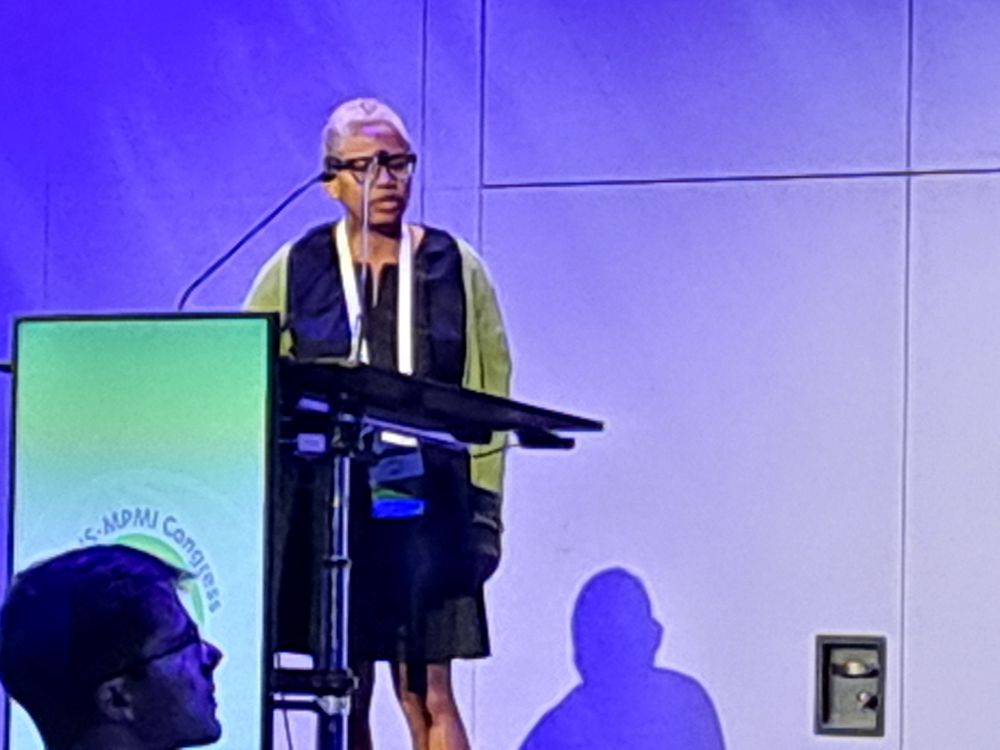
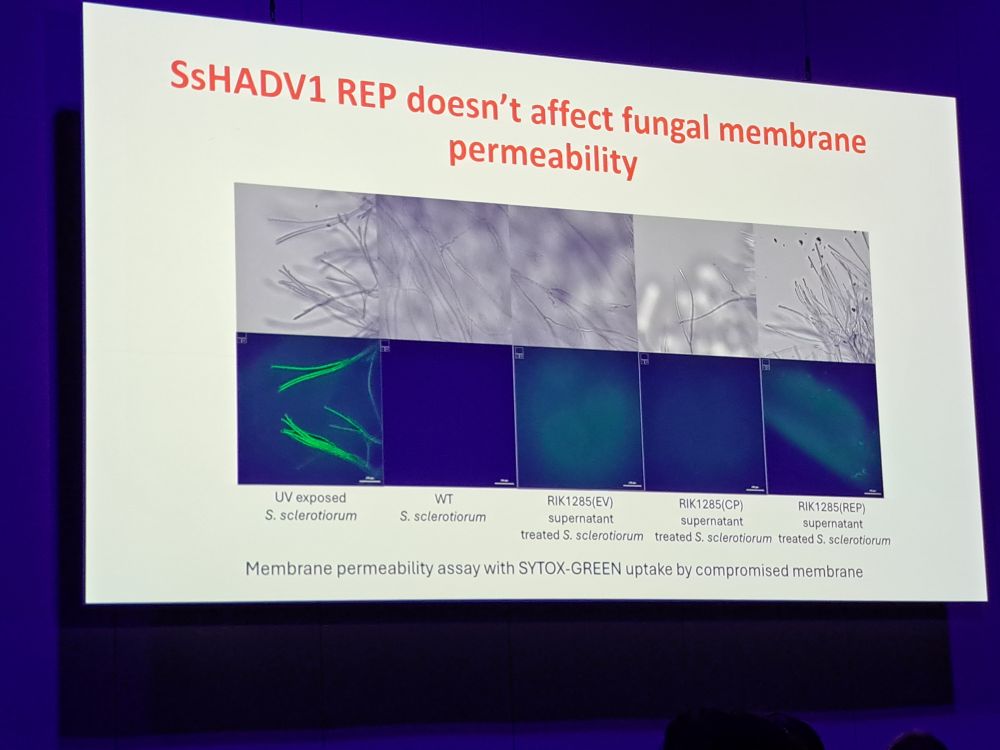
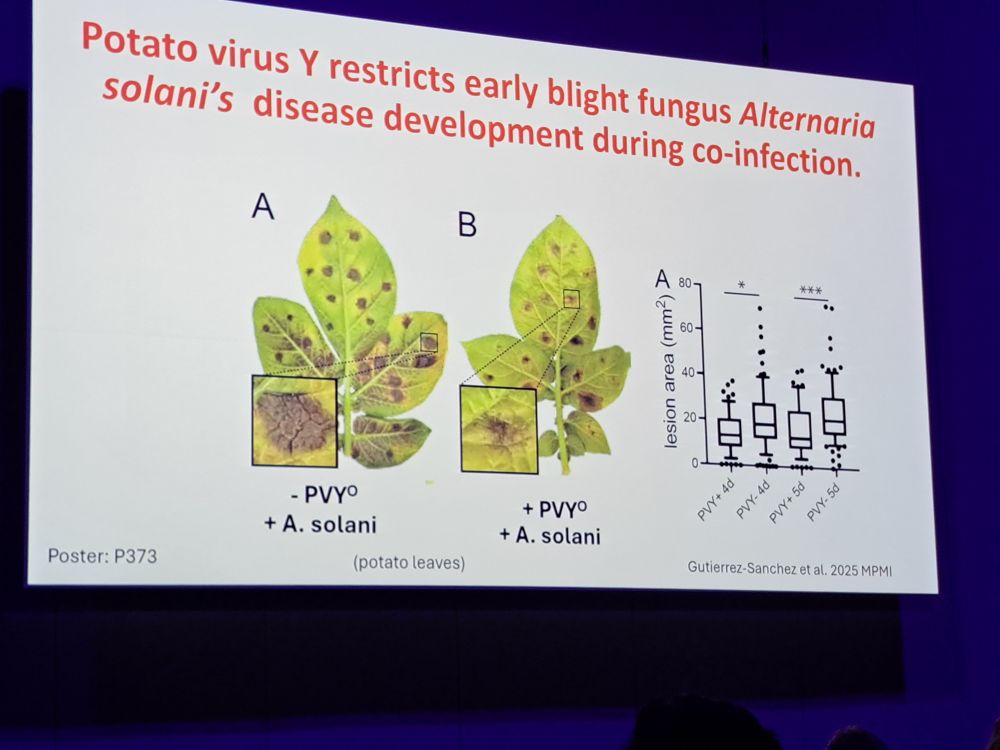
July 17, 2025 at 9:21 AM
#2025ISMPMI Aurelie Rakotondrafara shows very interesting effects of mycovirus infection of Sclerotinia on virulence on the host plant. Take home to use mycoviruses and plant viruses to limit the spread of fungal pathogens.
#2025ISMPMI Agnus Bucknell of the Talbot lab gives an exciting presentation to engineer fungal effectors recognizing immune sensors based on Pik1. Great and clear talk.
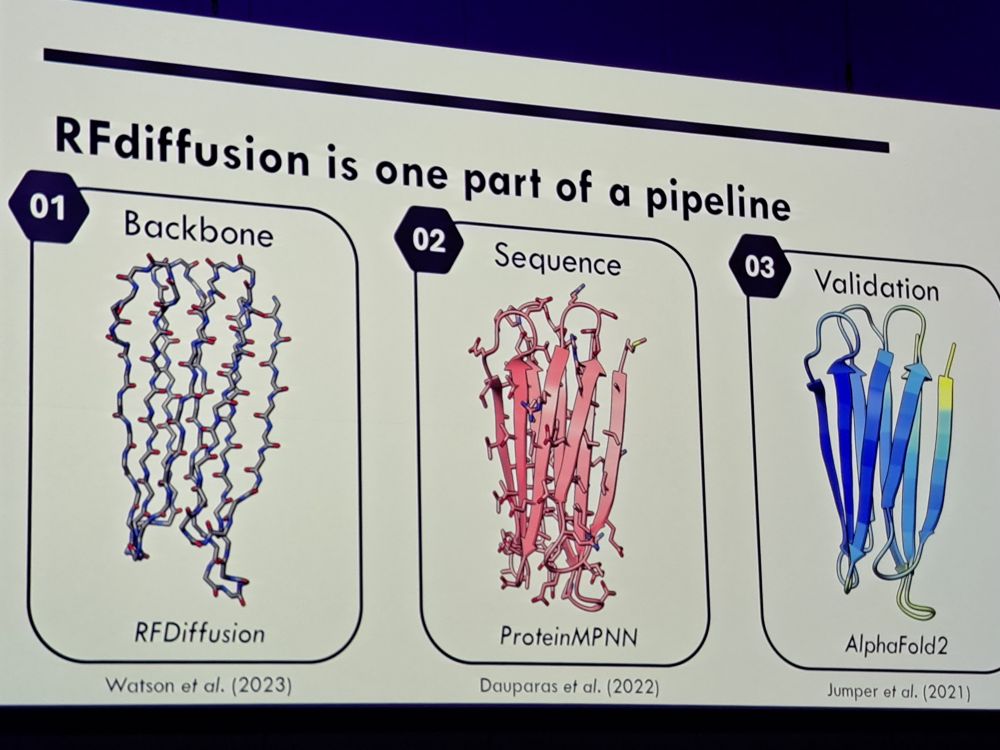

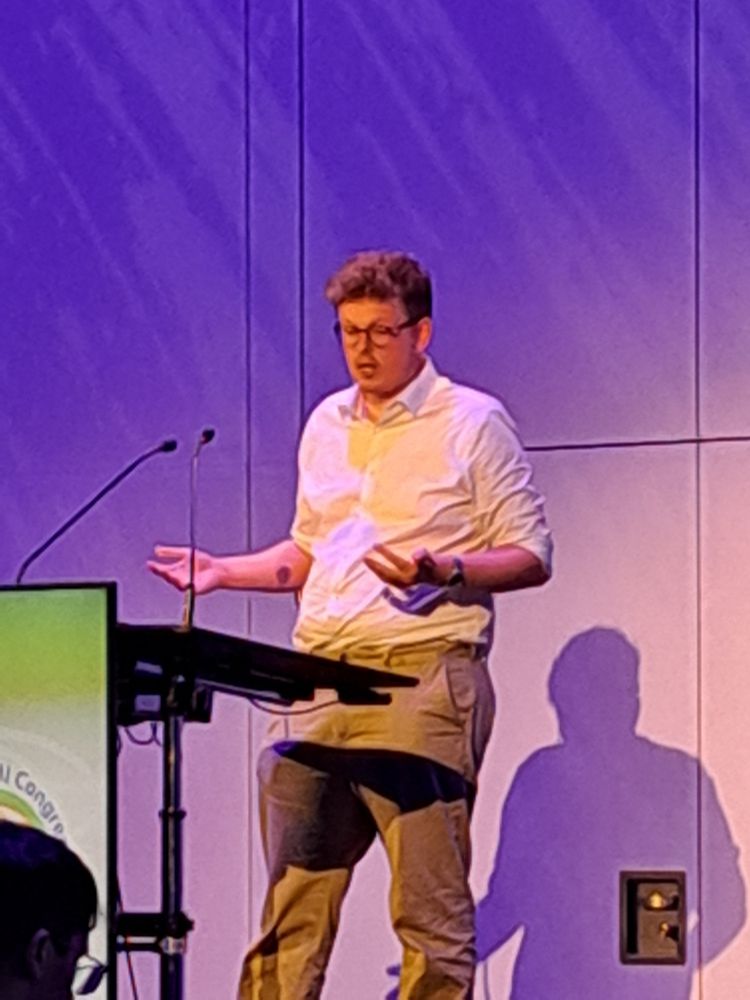
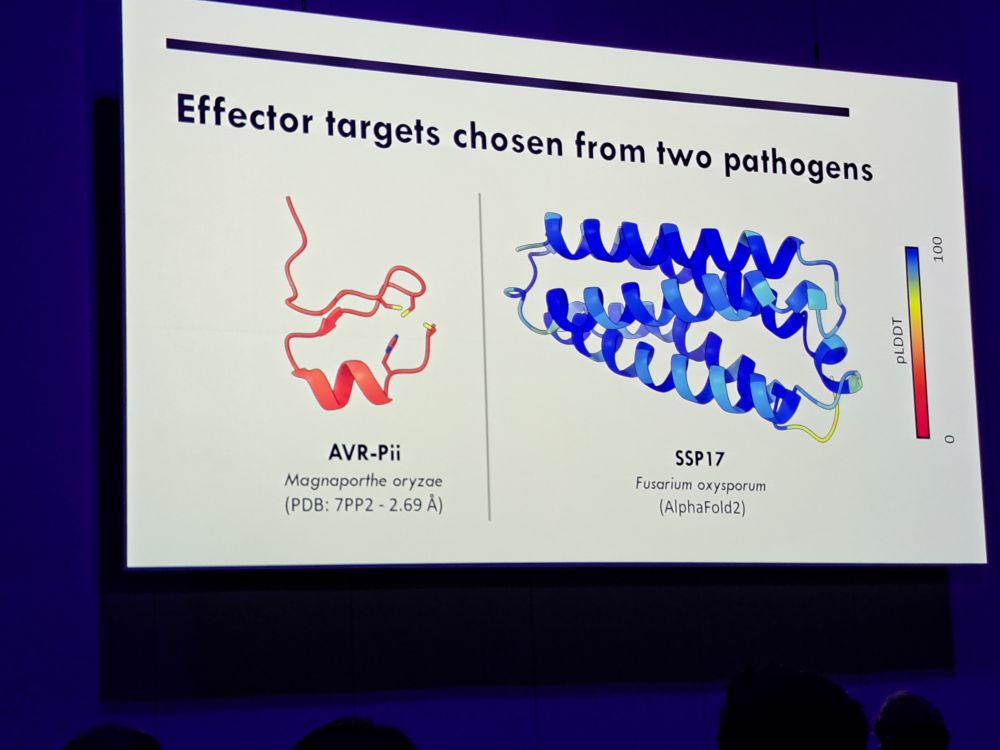
July 17, 2025 at 8:58 AM
#2025ISMPMI Agnus Bucknell of the Talbot lab gives an exciting presentation to engineer fungal effectors recognizing immune sensors based on Pik1. Great and clear talk.
#2025ISMPMI Ksenia Krasileva gives an impressive talk on predicting receptor-ligand interactions. CHECK OUT mamp-ml!



July 17, 2025 at 8:46 AM
#2025ISMPMI Ksenia Krasileva gives an impressive talk on predicting receptor-ligand interactions. CHECK OUT mamp-ml!
Reposted by Armin Djamei
TODAY. 15:15 @ Room P&Q #2025ISMPMI
#ISMPMI2025 attendees!
Bookmark our concurrent session co-organized with @uprogress.bsky.social featuring exciting talks on the spatial and temporal regulation of plant–microbe interactions.
We have 3 invited speakers: Feng Zhou, @lluginbuehl.bsky.social @type3lab.bsky.social
and…
Bookmark our concurrent session co-organized with @uprogress.bsky.social featuring exciting talks on the spatial and temporal regulation of plant–microbe interactions.
We have 3 invited speakers: Feng Zhou, @lluginbuehl.bsky.social @type3lab.bsky.social
and…
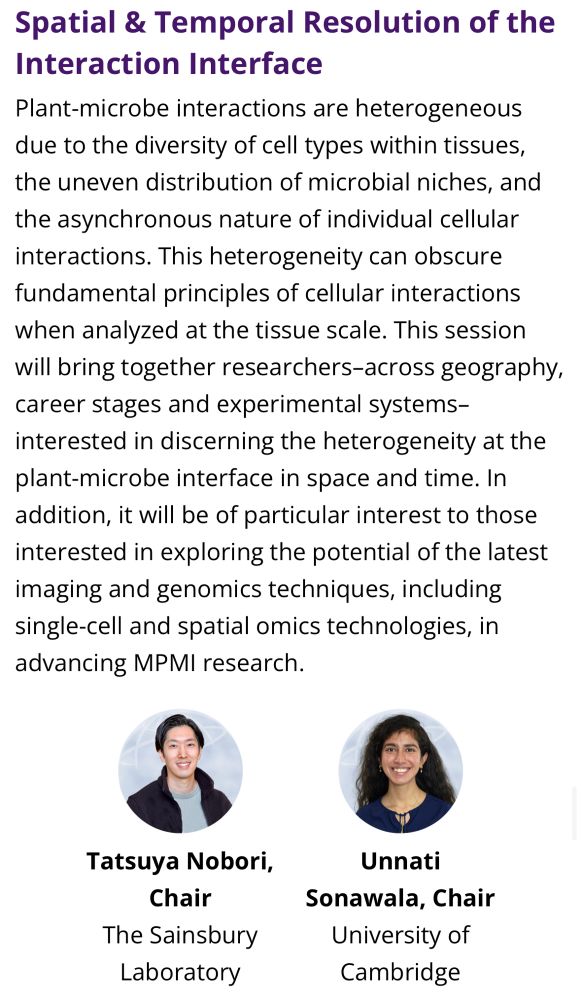
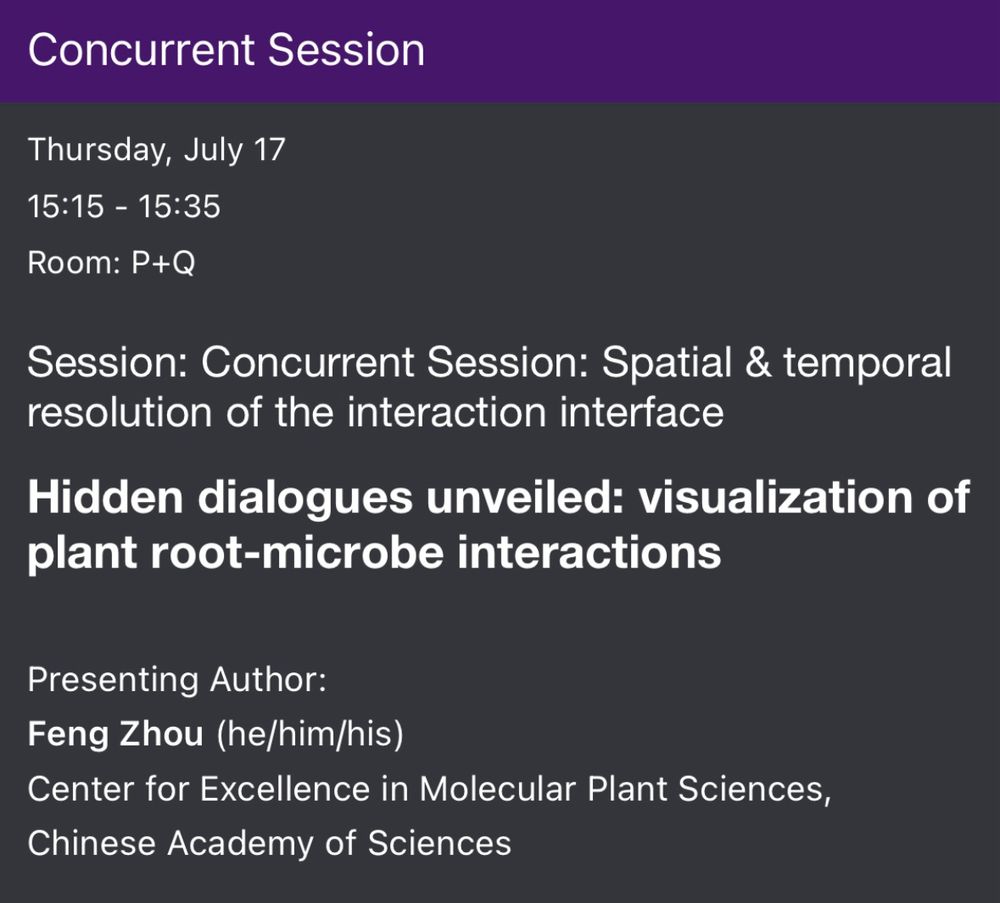
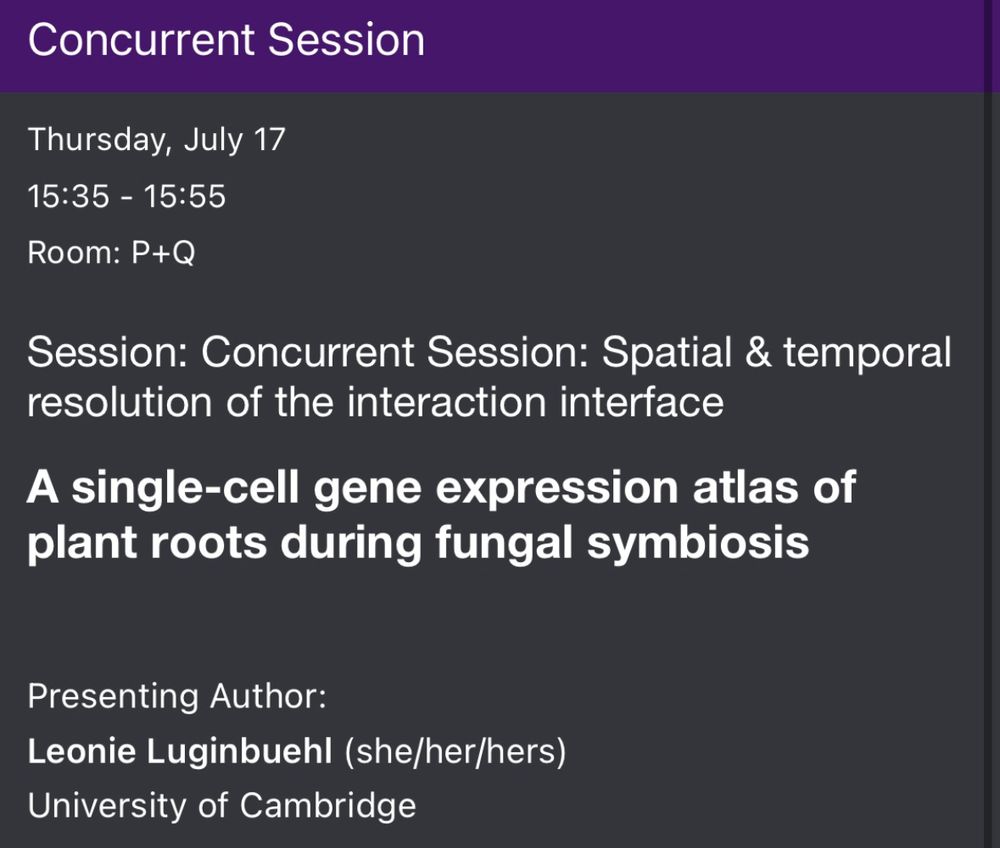

July 17, 2025 at 7:43 AM
TODAY. 15:15 @ Room P&Q #2025ISMPMI
#2025ISMPMI Oswaldo Valdes-Lopez points out that other nutrients beside Nitrogen limitation are important cues to decide on symbiosis with rhizobia. Phosphate limitation negatively impacts nodule formation.

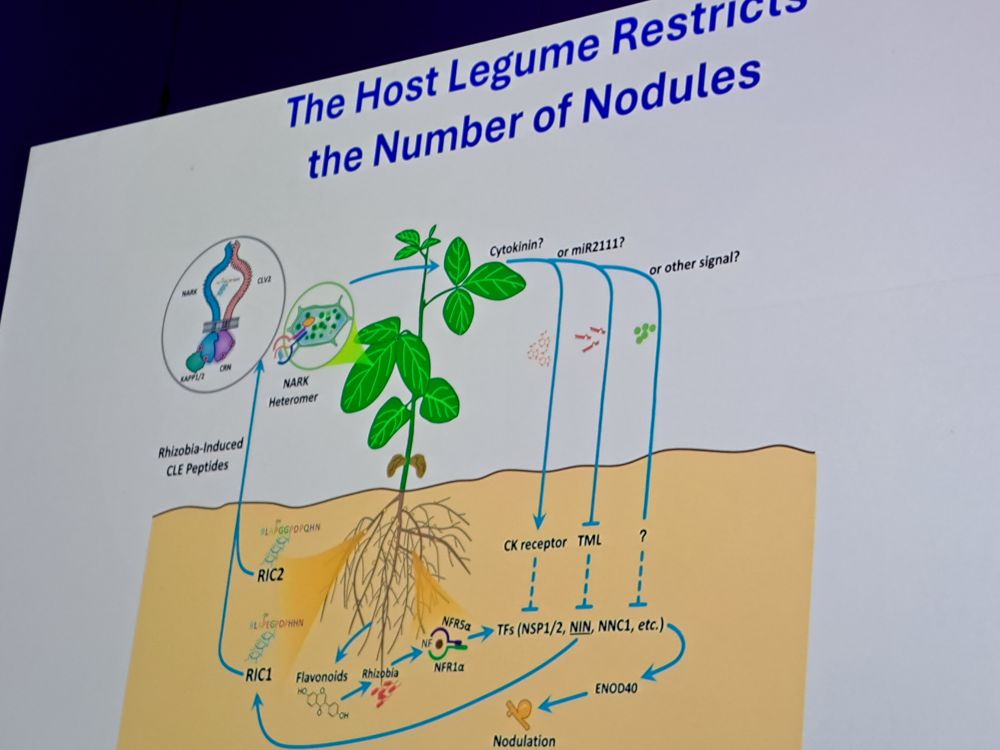
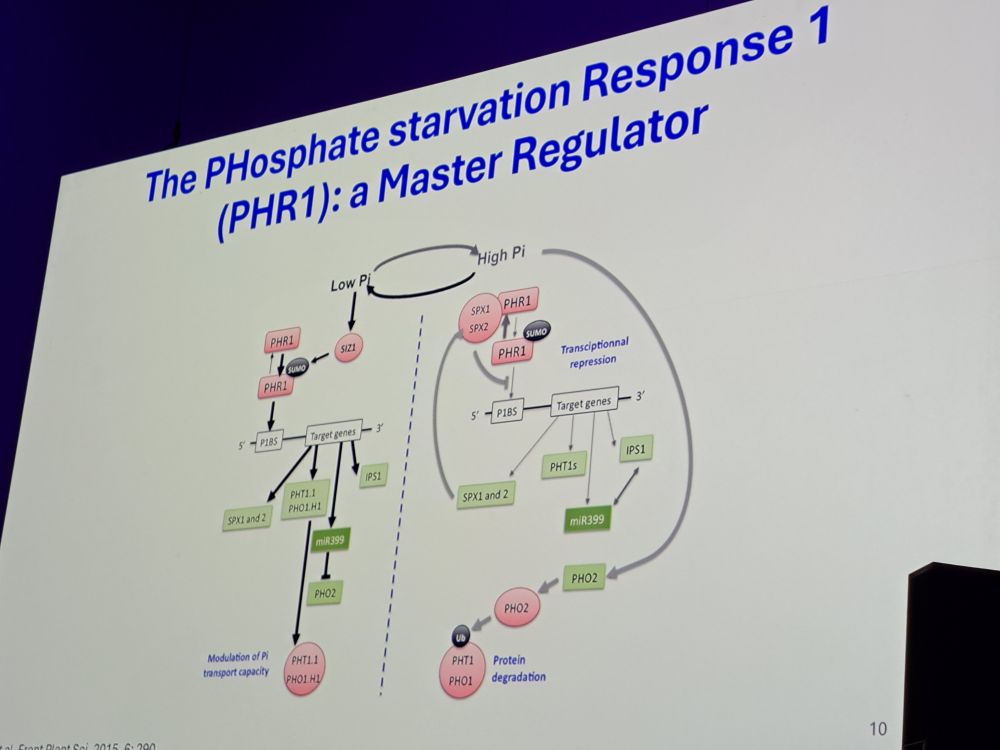
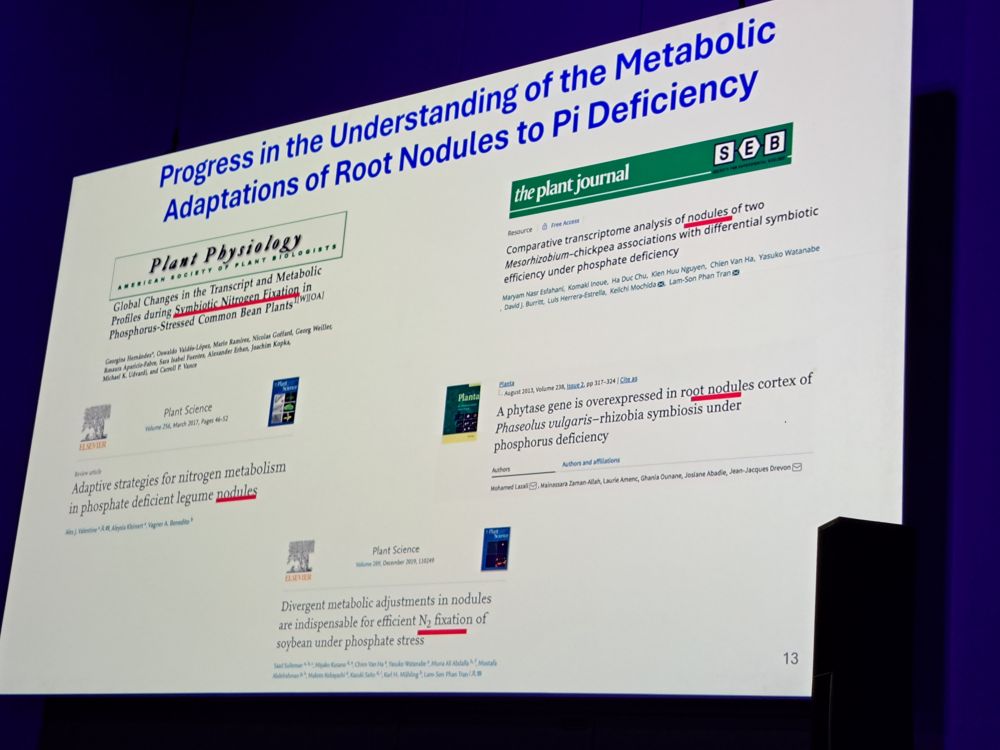
July 17, 2025 at 7:48 AM
#2025ISMPMI Oswaldo Valdes-Lopez points out that other nutrients beside Nitrogen limitation are important cues to decide on symbiosis with rhizobia. Phosphate limitation negatively impacts nodule formation.
#2025ISMPMI Evans Lagudah gives a beautiful and clear talk on the challenge to find durable and broad resistances. Most are genes of whatever type show race specificity but Lr34, Lr67 and Lr46 are encoding for membrane transporters showing a pathogen-attenuating resistance.
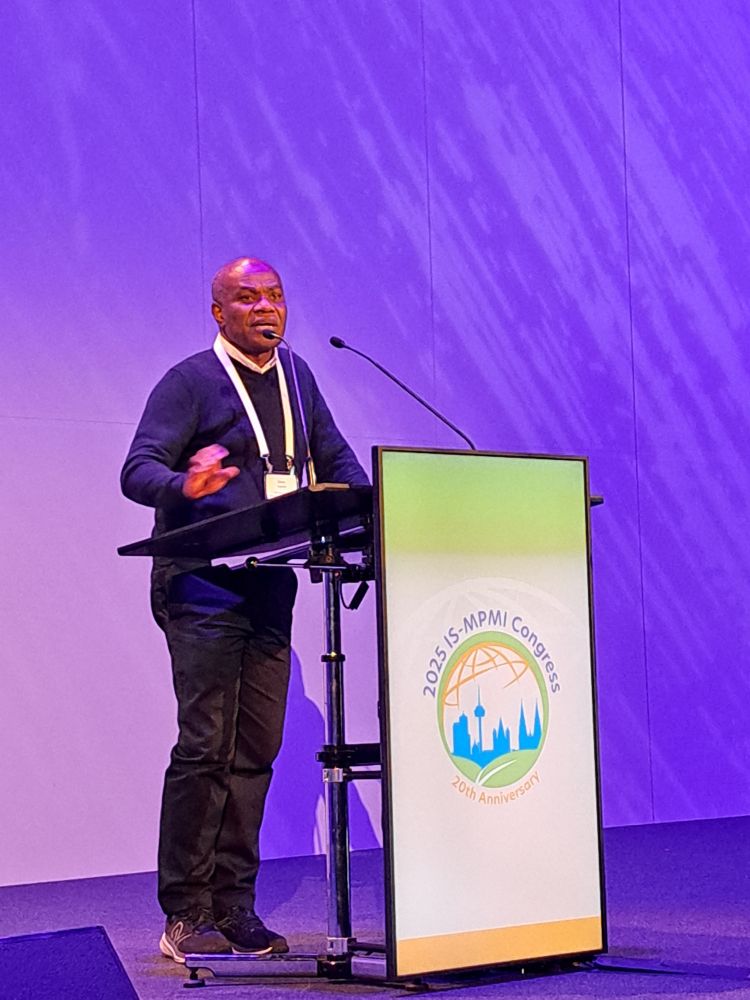


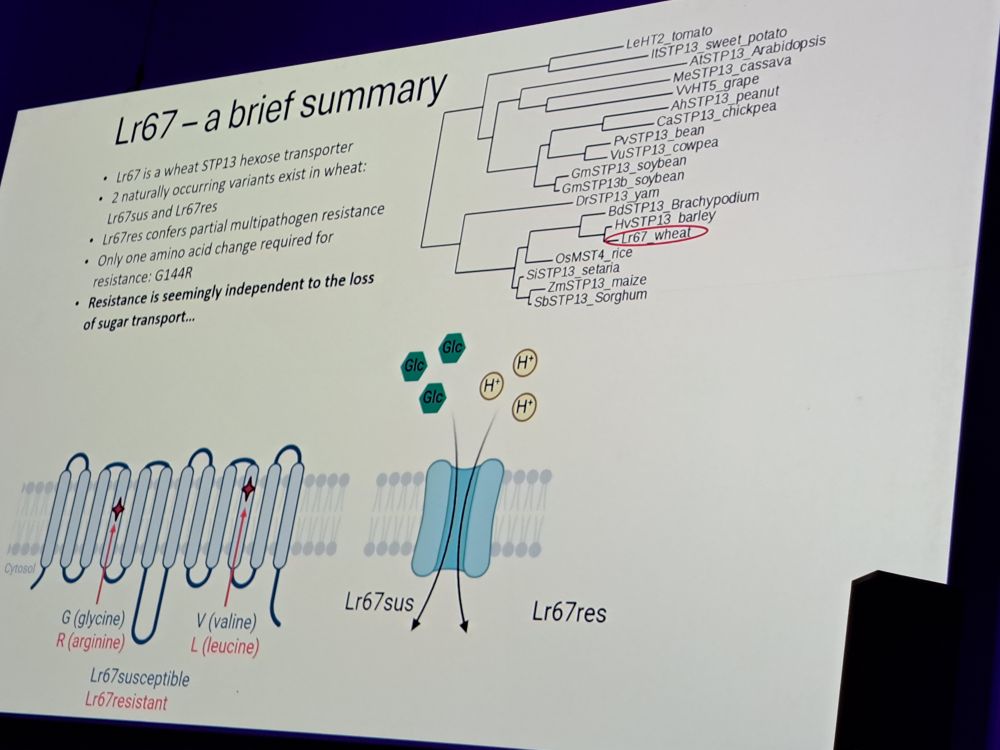
July 17, 2025 at 7:23 AM
#2025ISMPMI Evans Lagudah gives a beautiful and clear talk on the challenge to find durable and broad resistances. Most are genes of whatever type show race specificity but Lr34, Lr67 and Lr46 are encoding for membrane transporters showing a pathogen-attenuating resistance.
Reposted by Armin Djamei
We start the last day of #2025ISMPMI with Renier van der Hoorn who will present his pioneering work on how pathogens manipulate apoplastic defence
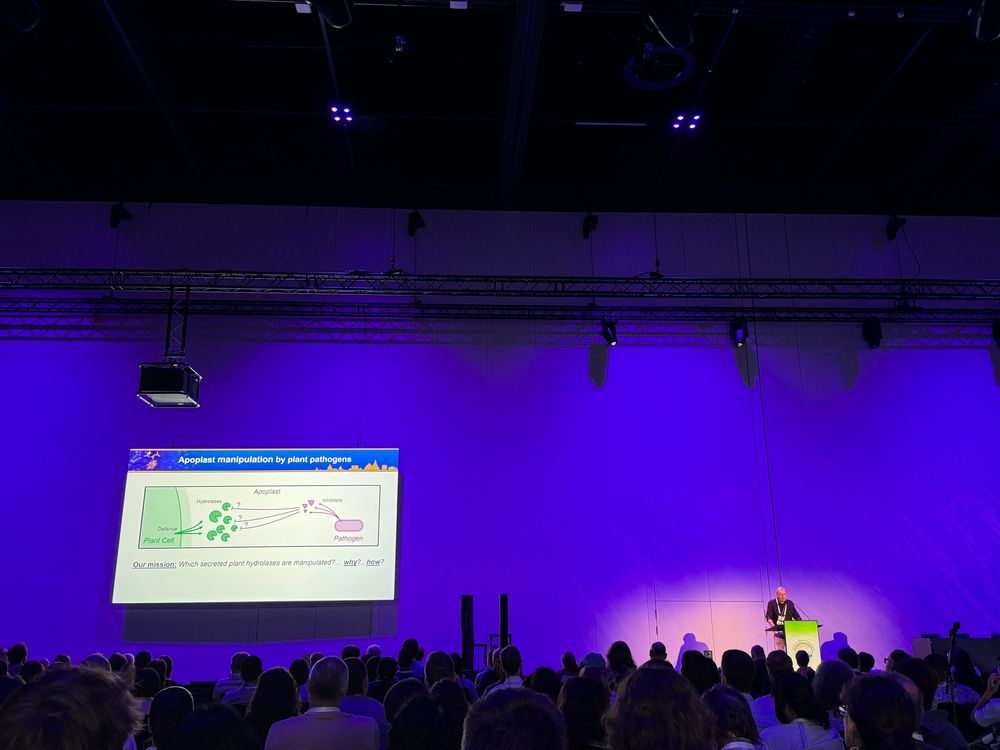
July 17, 2025 at 6:17 AM
We start the last day of #2025ISMPMI with Renier van der Hoorn who will present his pioneering work on how pathogens manipulate apoplastic defence
Reposted by Armin Djamei
Jian-Min Zhou shows unpublished data related to ZAR1 signaling and what other players are required in planta for activation of the resistosome and localization in the plasma membrane.
Find similarity with a salt stress response.
#2025ISMPMI
Find similarity with a salt stress response.
#2025ISMPMI
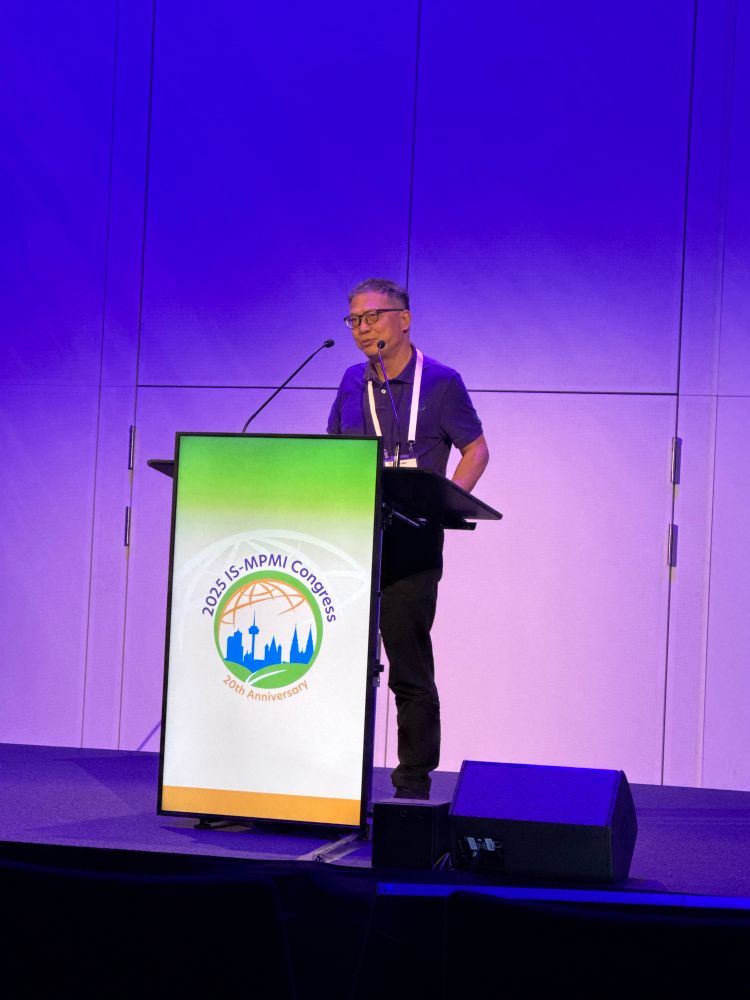
July 17, 2025 at 6:53 AM
Jian-Min Zhou shows unpublished data related to ZAR1 signaling and what other players are required in planta for activation of the resistosome and localization in the plasma membrane.
Find similarity with a salt stress response.
#2025ISMPMI
Find similarity with a salt stress response.
#2025ISMPMI
#2025ISMPMI Jian-Min Zhou calls for more interdisciplinary approaches in plant microbe research to bring our research to the next level. He gives insights on ZAR1 signalling. Zar1 influences SYT1 distribution in a Ca2+ binding dependent manner.
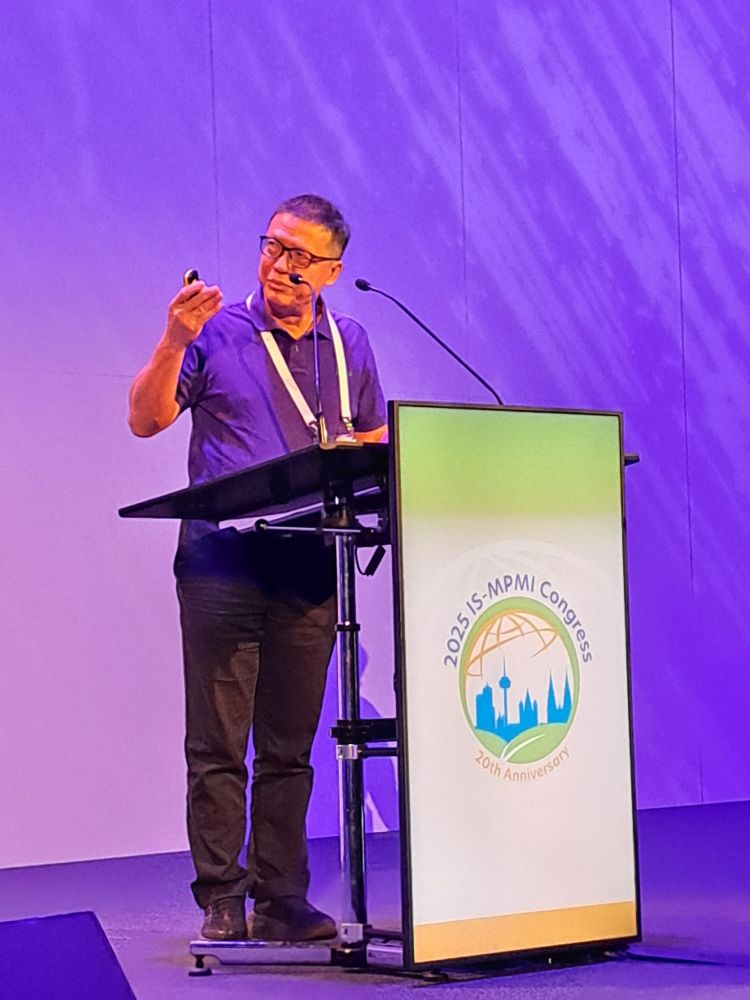
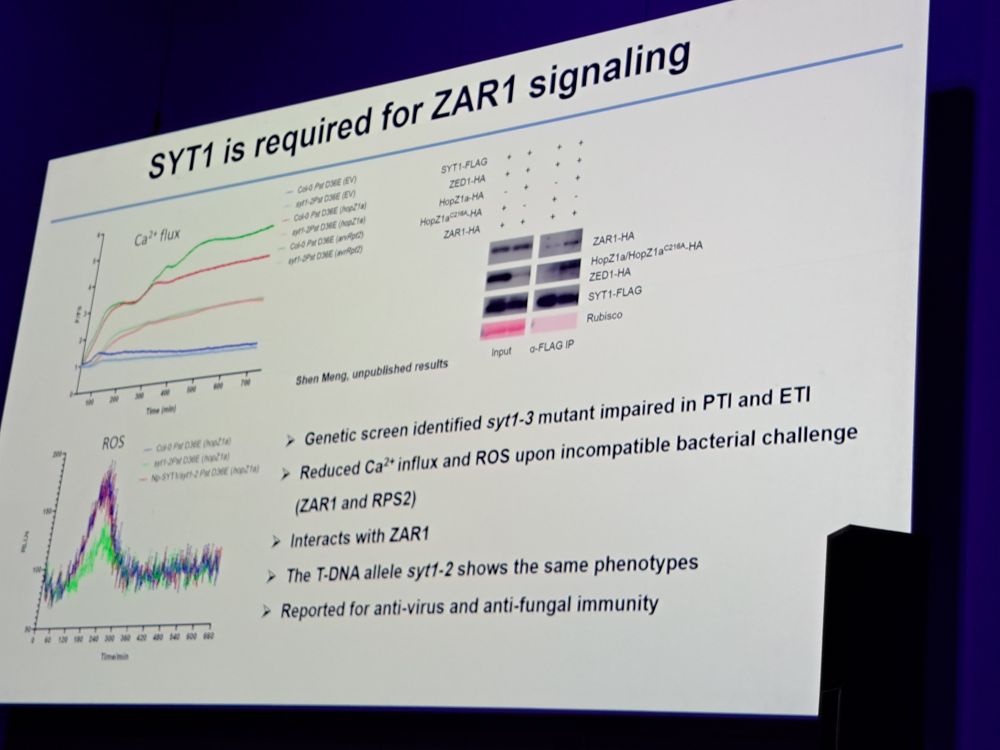
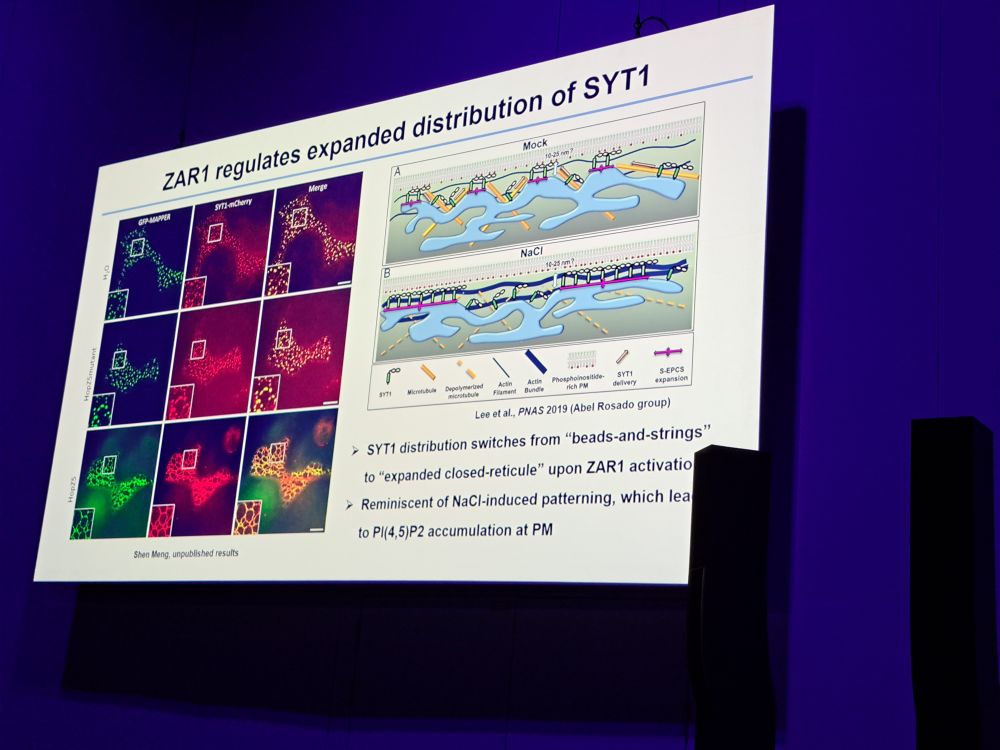
July 17, 2025 at 6:51 AM
#2025ISMPMI Jian-Min Zhou calls for more interdisciplinary approaches in plant microbe research to bring our research to the next level. He gives insights on ZAR1 signalling. Zar1 influences SYT1 distribution in a Ca2+ binding dependent manner.
#2025ISMPMI the great Renier van der Hoorn starts the plenary with exciting research about the apoplastic battlefield in bacterial-plant interactions. Hydrolases and inhibitors all around...glycosyrin inhibitor pathway is conserved and spread inhibiting galactosidases and glucosidases.
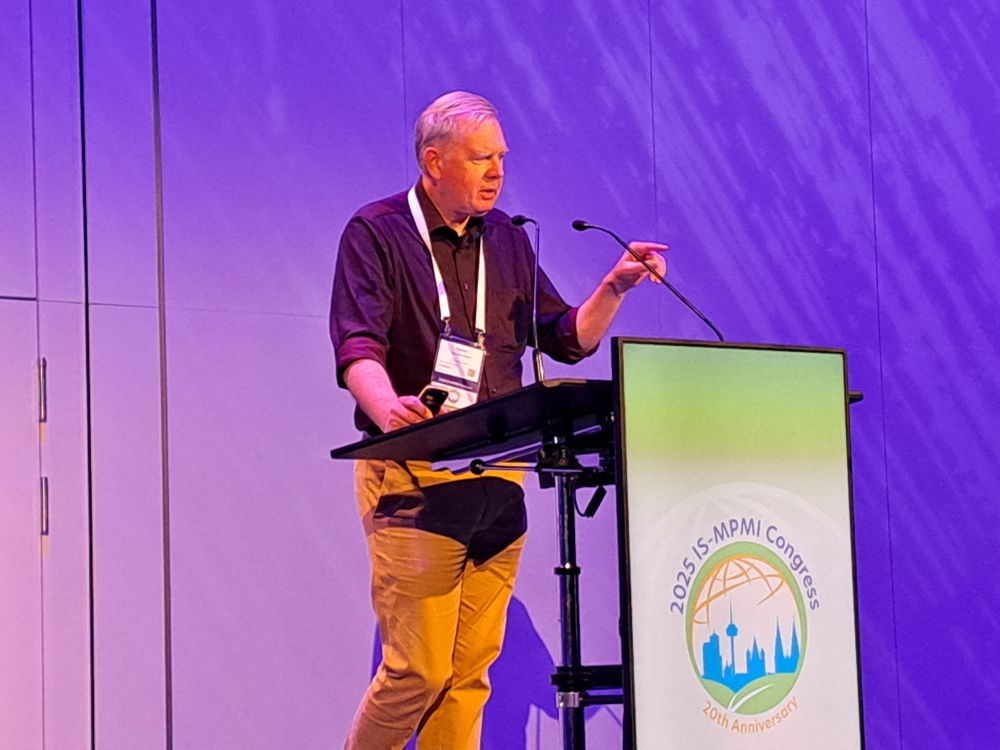
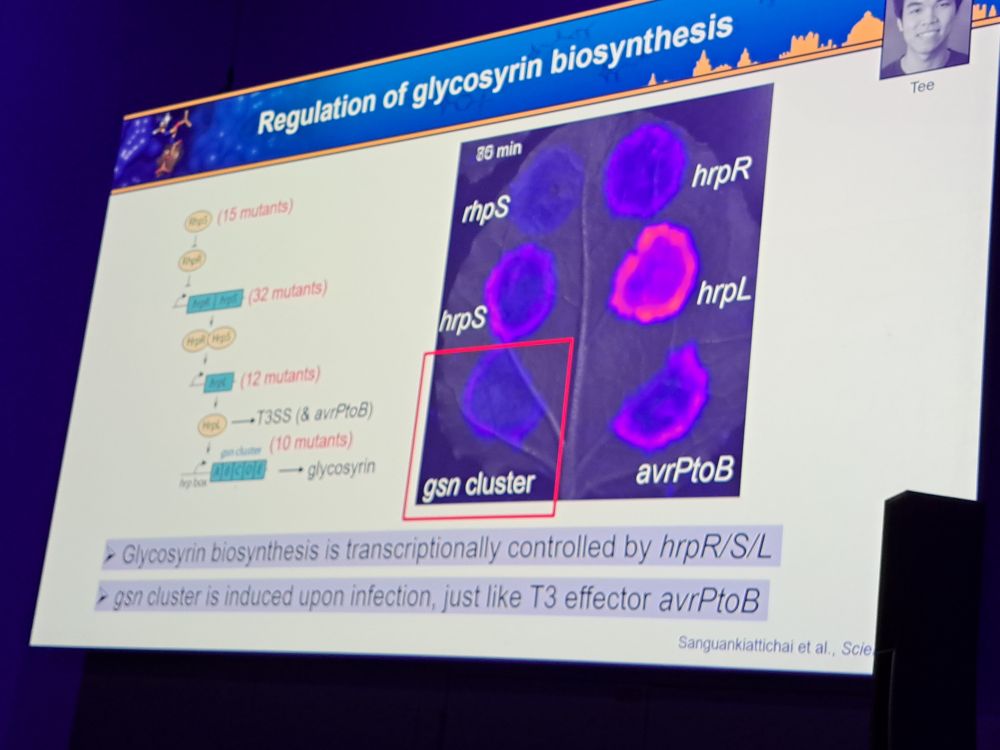
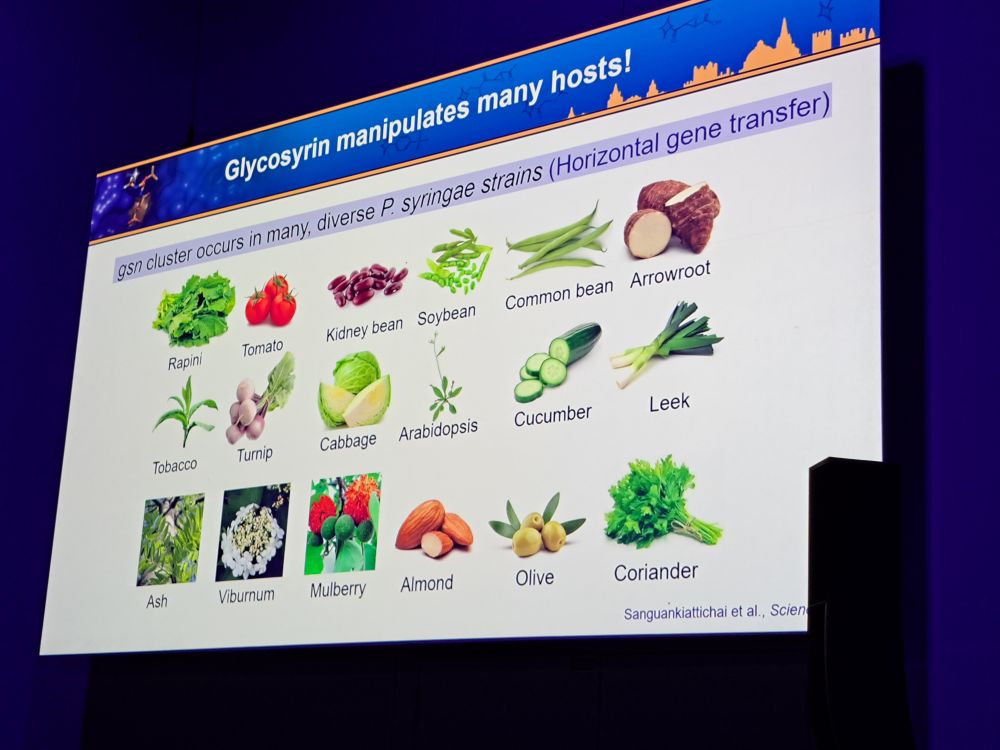
July 17, 2025 at 6:34 AM
#2025ISMPMI the great Renier van der Hoorn starts the plenary with exciting research about the apoplastic battlefield in bacterial-plant interactions. Hydrolases and inhibitors all around...glycosyrin inhibitor pathway is conserved and spread inhibiting galactosidases and glucosidases.
Reposted by Armin Djamei
Arabidopsis thaliana CELLOX1 limits fungal colonization in roots. Nice talk by Giulia Peruzzi at #2025ISMPMI, @ceplas.bsky.social
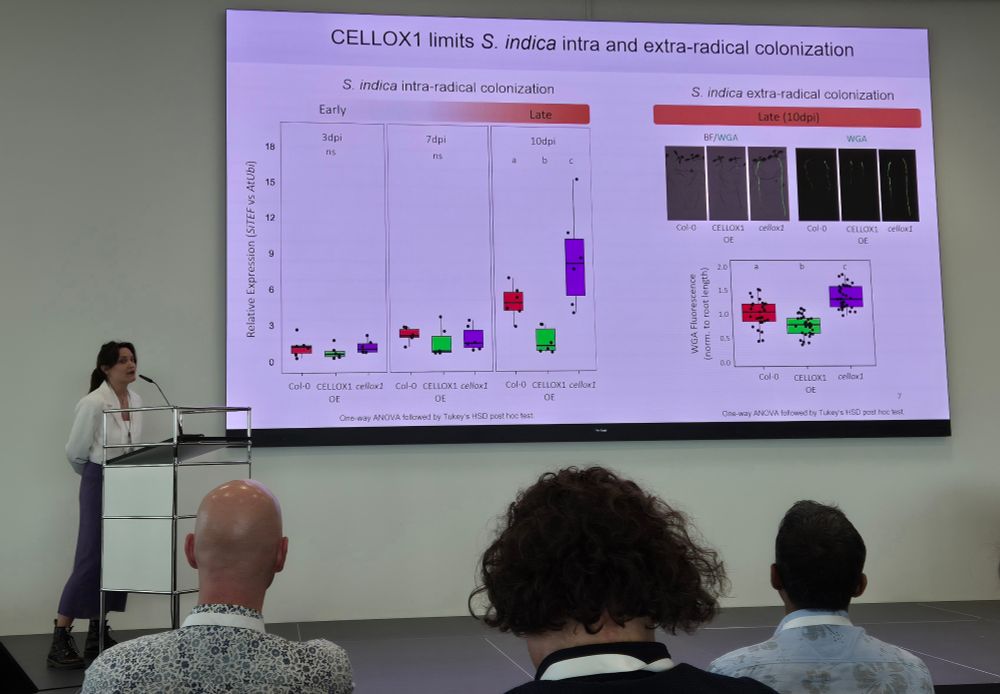
July 16, 2025 at 9:58 AM
Arabidopsis thaliana CELLOX1 limits fungal colonization in roots. Nice talk by Giulia Peruzzi at #2025ISMPMI, @ceplas.bsky.social


